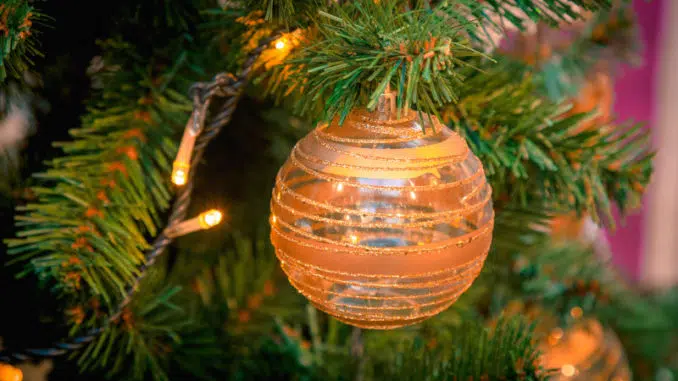
How are Christmas baubles made?


A tree without Christmas baubles is not a tree!
We are used to decorate our trees with light garlands, glitter garlands or pearls and baubles of all colors.
But why this tradition and how are Christmas baubles made?

If the fir tree, or rather, the evergreen trees were already used in ancient Egypt and China to symbolize eternal life, the decorations of the fir tree did not come until later.
It was in Germany that the tradition of decorating the Christmas tree began. By hanging apples on it to symbolize the Garden of Eden and hosts.

Chain or network molecules formed by the bond of several small molecules together.
Very quickly, the hosts were replaced by cookies. In the same room, the Germans placed there a wooden Christmas pyramid on which they placed small figurines, branches of fir trees and candles and a star.
In the 16th century, the fir tree and the wooden pyramid merge to give the Christmas tree.
La tradition du sapin de Noël est arrivée en Angleterre au 19e siècle, car le mari du la Reine Victoria était Allemand. On prit l’habitude de les décorer avec des petits jouets, des bonbons, des morceaux de popcorn et de gâteaux de fantaisies.

It was in Lauscha, a small village in East Germany, that it all started thanks to Hans Greiner (1550 – 1609). In this village lost in the middle of the Thuringian forest, he makes garlands made of glass beads. Hans is a master glassmaker and it is he who develops the glass industry in Lauscha. His worthy descendants continue to develop the business.

The Christmas tree bauble was first mentioned in 1848. The family produced glass treasures all year round for the holiday season: Christmas.
And it is thanks to the husband of Queen Victoria, a German of origin, that the production of Christmas glass baubles has grown to be exported to our countries.



Rooms for the preparation of glass Christmas baubles in 1920 (images above) and in 1925 (opposite left).
Image rights authorized by the Museum für Glaskunst in Lauscha.

To start, you need sand. In Lauscha, the sand came from the Steinheid’s quarry.
The sand is then melted at high temperatures in ovens at the end of a long rod. You get a kind of pâte de verre like plasticine. We can, therefore, give it the desired shape using molds. This is where the glassblower comes in. He blows the glass through the long rod to make it swell. As on the video opposite.



Today plastic Christmas balls are made. Yes, despite their metallic reflection, it is indeed plastic, and to speak like chemists, polymers.
They are made of a plastic called polystyrene (PS). The same one found in the composition of CD boxes, yogurt pots or foam polystyrene.
The polystyrene is first heated to melt, and then it is blown into a mold to give it its spherical shape.
The advantage? It’s that if it falls, it bounces. Unlike the glass ball which breaks into a thousand pieces.
Once varnished and treated with a metallic color spray, your baulbes will have a festive appearance. Matt, shiny, glittery, whatever. Everything is possible. They can even be drilled and stacked to adapt to all supports and all types of decorations, even the most original.
And because they are solid, they are reusable from year to year.
Copyright © 2023 | CurioKids.net - All rights reserved